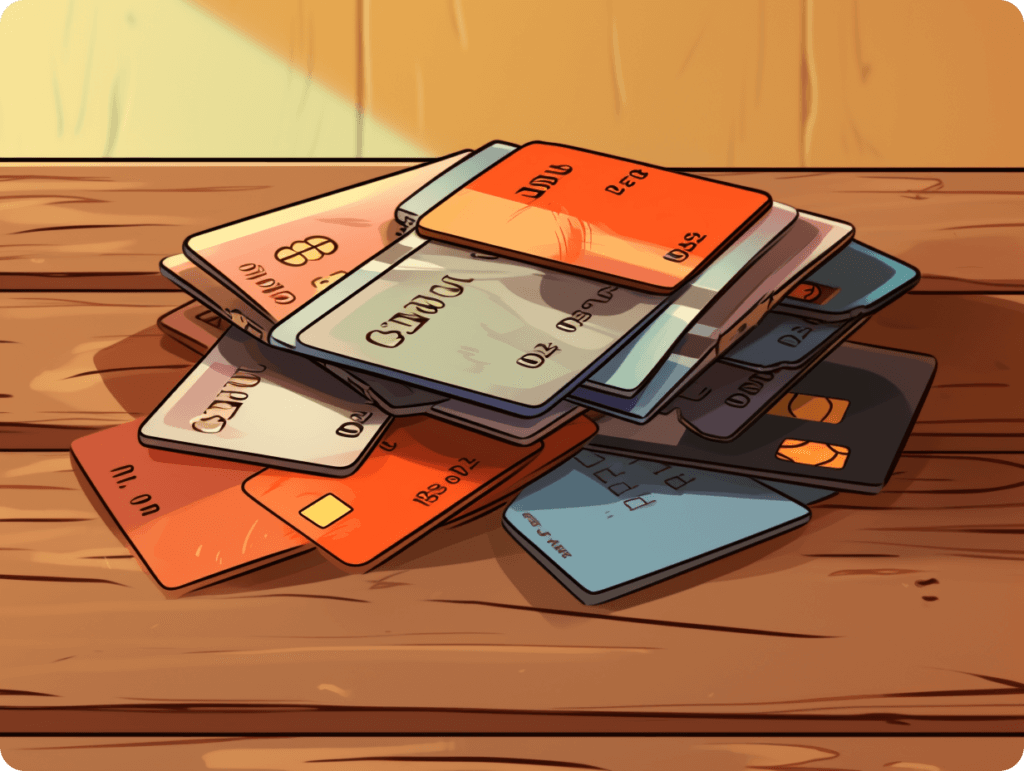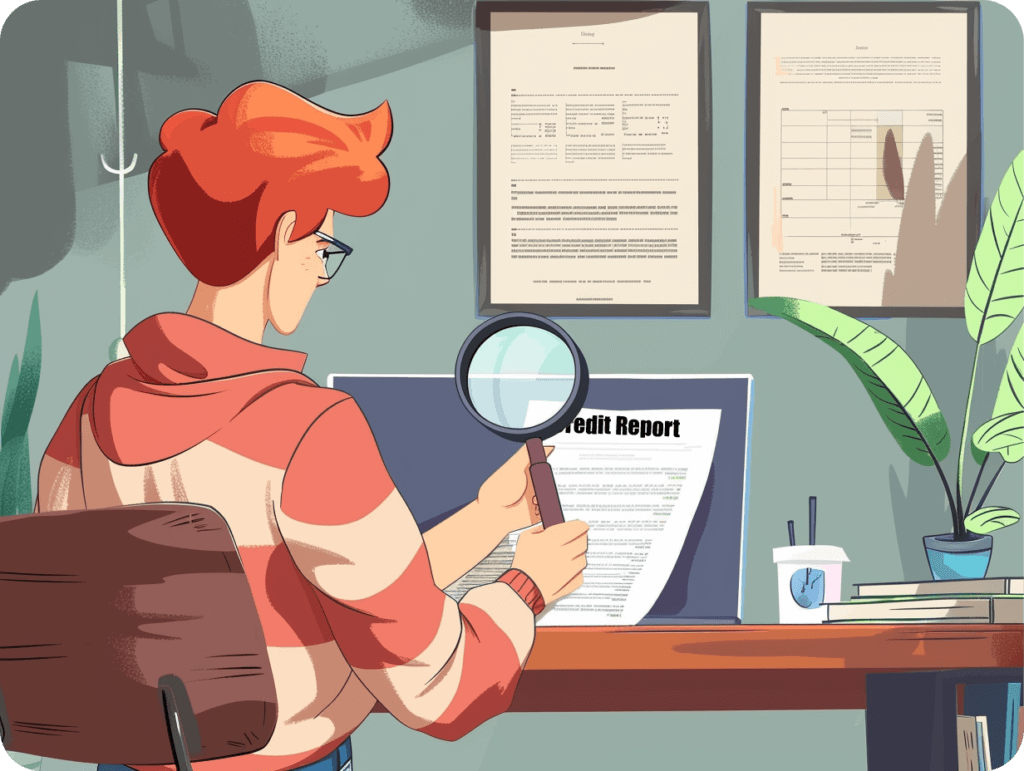- Blogs
- /
- How is Credit Card Interest Calculated
How is Credit Card Interest Calculated

Summary
Credit cards have made our lives convenient and flexible, but credit card interest—the extra cost of borrowing money on your credit card—can be a heavy financial burden. And that’s because it can quickly add up if not managed properly.
Most people ask, ‘How is credit card interest calculated?’ because they know that understanding how it’s calculated is critical in helping them make informed financial decisions and avoid unnecessary debt.
So, today, we’ll break down the process of calculating credit card interest, from understanding the terms and words used to discussing how interest is calculated and highlighting potential risks you must watch out for.
Let’s dive in!
Key Takeaways
- Credit card interest is a fee for borrowing money from credit card issuers. This fee is often expressed as the annual percentage rate (APR).
- Your average daily balance is the sum of your balance for each day of your billing cycle.
- Purchase APR applies to every purchase you make using your credit card if you don’t pay off the balance by the due date.
- Cash advance APR applies when you withdraw cash from your credit card through an ATM or other means and can be as high as 30%.
- Knowing how credit card interest is calculated will help you make intelligent choices and effectively manage your finances.
- Although variable interest rates fluctuate over time based on market conditions or other factors, fixed interest rates are consistent regardless of external factors.
- Be sure you understand if your credit card has a variable or fixed rate because it’ll help you anticipate changes in your monthly payments.
How is Credit Card Interest Calculated? Here’s Everything You Must Know
Step 1: Figure Out Your Daily Rate
First, figure out the daily periodic rate by dividing your annual percentage rate (APR) by 365.
That means if your credit card has an APR of 20%, the daily periodic rate would be 20% / 365 = 0.000547%.
We’ll use this to determine the interest charged on your average daily balance.
Once you’ve found the daily periodic rate, we’ll multiply it by your average daily balance and add these amounts over a billing cycle.
So, if you’ve got $30,000 on your credit card on the first day of your billing cycle, on the second day, you’d have a balance of $30,000 x 0.000547 = $30,016.41.
And on day three, you’d have a balance of $30,016.41 x 0.00547 = $30,032.82, and so on.
Understanding how to calculate your daily rate will make estimating how much interest you’ll be charged much easier.
Step 2: Find Your Average Daily Balance
Your average daily balance is the sum of your balance for each day of your billing cycle. To find your average daily balance, you must write down your balance for each day and divide that by the number of days in your billing cycle, 30 days.
So, if your daily balance is:
- Day 1-10: $1,800
- Day 11-15: $5,000
- Day 16-25: $1,000
- Day 26-30: $2,000
You’d have an average daily balance of:
($1,800 x 10) + ($5,000 x 5) + ($1,000 x 10) + ($2,000 x 5) / 30 = $2,100
Step 3: Find Your Interest Rate
Once you know your daily periodic rate and average daily balance, it’s time to find how much interest you’d be paying.
All you have to do is multiply your average daily balance by your daily periodic rate and the number of days in your billing cycle.
Your interest would be: $2,100 x 0.000547 x 30 = $34.46
Yes, paying $35 in interest doesn’t seem like much, but it can quickly snowball into a larger sum if you don’t fully pay it off monthly.

What You Need to Know About Credit Card Interests
Credit card interest is a fee you must pay for borrowing money from your credit card issuer. This fee is often expressed as APR, or the annual percentage rate. And the amount of interest you’re charged depends on your outstanding balance and the APR.
So, if you carry a balance on your credit card, you’ll be charged interest on that amount. And that leads us to…
Annual Percentage Rate (APR) vs. Interest Rates
Now, let’s talk about APR and interest rates. APR includes the interest rate and any additional fees or charges associated with your credit card. On the other hand, the interest rate refers explicitly to the cost of borrowing money.
It’s always best to compare APRs because it can help you choose a credit card with lower overall costs.
How? Let’s say you want to get groceries with your credit card; if one credit card has a higher APR than another, borrowing money using that particular credit card will cost you more in terms of interest and fees.
Three Types of Credit Card Interest
Here are three unique credit card interests you need to know about:
1. Purchase APR:
This type of interest applies to regular purchases you make using your credit card. If you don’t pay off the full balance by the due date, the purchase APR kicks in, and sometimes it can exceed 20%.2. Cash Advance APR:
The cash advance APR applies when you withdraw cash from your credit card through an ATM or other means.
Be careful, though, because cash advances often come with higher rates— as high as 30%—and may even start accruing interest immediately without a grace period.3. Balance Transfer APR:
When you transfer an existing balance from one credit card to another, this balance transfer APR comes into play.Some credit cards offer an introductory balance transfer APR when you transfer credit card debt from another card to their card.But, ensure you understand your credit card issuer’s terms and conditions for balance transfers before transferring your debt.
Staying updated on these different types of interest can help you make informed decisions about using your credit card wisely.
Understanding how credit card interest is calculated is crucial in managing your finances effectively. You can make more intelligent choices by knowing the basics, like the difference between APR and interest rates, and being aware of the various types of credit card interest.

Types of Credit Card Interest Rates
Knowing your interest rates is crucial since it allows you to plan and budget effectively. Understanding the different APRs can help you determine which transactions may incur higher interest charges and adjust your spending accordingly.
Let’s say your card’s cash advance APR is significantly higher than its purchase APR; then the wise decision would be to limit cash withdrawals from your credit card.
1. Variable vs. Fixed Rates
There are two main types: variable and fixed rates. Some credit cards have variable interest rates that fluctuate over time based on market conditions or other factors. These changes can impact the interest you pay on outstanding balances each month.
On the other hand, fixed-rate credit cards maintain a consistent interest rate over time, regardless of external factors. So, your interest rate remains unchanged even if market conditions change or economic indicators shift.
Understanding whether your credit card has a variable or fixed rate will help you anticipate changes in your monthly payments. If you’ve got a variable rate card, be prepared for potential fluctuations in the amount of interest charged on your outstanding balances.
2. Introductory and Promotional Rates
Credit card issuers often entice new customers with introductory or promotional rates that offer lower or even 0% APR for a limited time. These special rates typically apply to purchases made using the card or balance transfers from other credit cards.
And yes, even though these introductory rates can be beneficial, you need to understand when they expire and the new rate afterward. After the promotional period ends, the interest rate on your credit card may increase significantly, potentially leading to higher monthly payments.
If you’re considering taking advantage of an introductory or promotional rate, read and understand its terms and conditions. Pay attention to any fees or penalties that may apply if you don’t meet specific requirements during the promotional period.
Here’s How Credit Card Interest Charges Are Applied

Timing of Interest Charges
Interest charges on credit cards can start accruing from the date of each transaction if you don’t pay your balance in full by the due date. So, even if you pay the minimum amount, any remaining balance will still accumulate interest.
It’s important to note that if you carry a balance from one billing cycle to another, new purchases could accrue interest immediately without a grace period.
That’s why we always advise you to pay off your credit card balance before the due date because doing so will prevent interest from getting applied to your outstanding balance and save you from bankruptcy in the long run.
Minimum Payments and Interest Charges
Making only the minimum payment required by your credit card issuer won’t eliminate all interest charges. While it helps avoid late fees and keeps your account in good standing, the remaining balance will continue to accrue interest until it’s fully paid.
If you want to reduce the principal amount owed and future interest charges, consider paying more than just the minimum payment.
Increasing your payments hastens your progress toward paying off your debt faster and saving money on accumulated interest over time.
Effects of Carrying a Balance
Carrying a balance on your credit card means you’ll get charged interest on the outstanding amount, which will always lead to increased debt and higher overall costs. The longer you carry a balance, the more interest will accrue, making paying off what you owe harder.
Remember, it’s always best to strive to pay off your credit card balance in full each month so you can maintain a healthy financial state and prevent excessive debt from piling up.
Three Ways You Can Reduce Your Credit Card Interest
If you’re looking to avoid or reduce credit card interest, there are a few strategies you can employ.
Let’s check out some of them

1. Negotiate With Your Credit Card Issuer
One way you can lessen the impact of your credit card interest is by negotiating with your credit card issuer. They may be willing to lower your interest rate if you have a good payment history. Remember, it never hurts to ask!
Another option is transferring balances to a credit card with a lower Annual Percentage Rate (APR). Doing so can reduce your overall interest expenses and save you money in the long run.
Improving your credit score over time can also help qualify you for better interest rates. Lenders often consider borrowers with higher credit scores less risky, which means they may offer more favorable terms and conditions.
2. Always Make Payments On Time
Making payments before the due date is essential if you want to avoid accruing additional interest charges. By doing so, you’ll stay ahead of the game and prevent those pesky charges from piling up.
Some credit cards even offer grace periods where you won’t be charged interest if the balance is paid in full by the due date. Make sure you take advantage of this perk whenever possible.
Chipping away at your debt by making multiple payments throughout the billing cycle can also work in your favor because it’ll reduce your average daily balance and minimize overall interest charges.
3. Find Credit Cards with 0% APR and Low-Interest
Look for credit cards that offer introductory periods with 0% APR or low-interest rates for purchases or balance transfers. These offers can be incredibly beneficial.
But, ensure you understand the terms and conditions associated with these promotions. Make sure you know when the promotional period ends and what happens afterward.
Two Powerful Tools for Managing Your Credit Card Interest

1. Use a Credit Card Payoff Calculator
Credit card payoff calculators are handy tools that can help you figure out how long it will take to pay off your credit card debt. These calculators consider factors like your interest rates, minimum payments, and additional contributions toward paying down your debt faster.
Using a credit card payoff calculator can give you deeper insight into your payment schedule, help you explore different payment scenarios, and create effective strategies to tackle your debt.
2. Get Financial Education
If you want to enhance your knowledge about personal finance, including understanding how credit card interest is calculated, online platforms like Udemy, SkillShare, or Coursera have comprehensive courses that cover these topics.
You could also use financial blogs and videos from reliable sources to guide you in understanding and managing your credit card interest.
Every knowledge you gather will significantly help reduce your interest rates and avoid paying more than you could to accrued interest on debt.

Start Managing Your Interest
Now that you know the answer to, ‘How is credit card interest calculated?’ You have a solid understanding of how credit card interest is calculated and affects your finances, and you’re ready to put your knowledge to work.
Try your best to pay off your balance in full each month, negotiate for lower interest rates, or explore balance transfer options so you can minimize the impact of interest on your finances.
Remember, managing credit card interest is an ongoing process. Stay proactive in monitoring your credit card statements, reviewing your interest rates regularly, and exploring new strategies to maximize your financial health.
With these insights and actions, you can take control of your credit card usage and achieve greater financial freedom.
FAQs
1. How is credit card interest calculated?
Credit card interest is typically calculated based on the average daily balance method.
This means that your interest is determined by multiplying the outstanding balance by the daily periodic rate and then summing up these amounts over a billing cycle.
But, the specific calculation may vary depending on your credit card issuer.
2. What factors affect credit card interest rates?
Several factors can influence credit card interest rates, like your credit score, payment history, and credit card type. Also, market conditions and changes in the prime rate can impact your interest rates.
3. Can I avoid paying credit card interest?
Yes, you can avoid paying credit card interest if you pay off your balance before the due date each month. Doing so means you won’t carry over any balance to the next billing cycle and won’t incur any interest charges.
But, if you only make the minimum payment or carry a balance forward, interest will be applied to the remaining amount.
4. Can I reduce my credit card interest rate?
Yes, there are ways to lower your credit card interest rate. You can contact your credit card issuer and inquire about any available promotional offers or negotiate for a lower rate based on your excellent payment history.
You can also transfer your balance to a different credit card with a lower introductory APR and enjoy lower interest.

5. Does paying more than the minimum reduce my overall interest charges?
Absolutely! Paying more than the minimum payment can significantly reduce your overall interest charges.
You’ll decrease the outstanding amount and subsequent accrued interest by paying more towards your principal balance each month. This approach helps you save money in the long run and pays off your debt faster.
Our Latest Blogs:
FREE Strategy Session to Fix Your Credit Blogs / Facebook Twitter Linkedin Instagram Share Summary Understanding the effects of...

ThisIsJohnWilliams
FREE Strategy Session to Fix Your Credit Blogs / Financial stability is the cornerstone of well-being, so understanding the...

ThisIsJohnWilliams

ThisIsJohnWilliams

ThisIsJohnWilliams

ThisIsJohnWilliams






